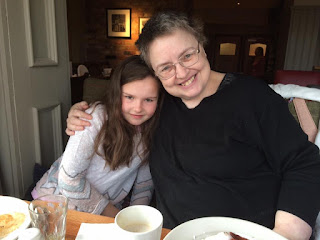Writing in the Now
Originally posted on the Pocketeers blog.
When I presented a workshop for the lovely Write Place
Writing School at the beginning of November, I touched briefly on ‘writing in
the now’ and wanted to explore that point further.
As it wouldn’t be fair to share my students’ idea I have
come up with a scenario to explain what I mean.
Annie and James meet
in university when they join the same band, with Annie as the lead singer and
James as the lead guitarist/singer. They are each other’s first love, but at
the end of university life they go their separate ways because James decides to
move to America to pursue his musical career. Ten years later they meet up
again, and James is a huge star, whilst Annie is a backing singer, working to
keep a roof over her and her young son’s head. Annie is still hurt that James
left her and thought his career more important than their love and she is also
angry that he stole the song that they wrote together and which became his
biggest hit. She has been too proud to sue him for her rights and is certainly
not going to ask him now! It is revealed that James left because he had reason
to believe that Annie was cheating on him and he had taken the song as revenge.
When he meets Annie’s son, he automatically assumes the child is the other
guy’s, but Annie knows better. Not that she’s going to admit that to James
after he cheated her out of millions of pounds…
If you were writing the novel to this short summary, where would
you begin?
When one of the students came up with a scenario that
charted all her hero and heroine’s romantic life, I suggested to her that she
would be much better starting the story in the now; at the point where their
conflict is about to come to a head.
A chronological story that begins with the hero and heroine
falling in love, maybe getting married or living together before conflict rears
its ugly head may be more realistic. After all, in real life, falling in love
and getting married is generally the easy bit. It’s only after when children
and lack of money come along that conflict starts. But if you started at the
very beginning, it would make the first chapters rather slow. Of course if your
hero and heroine do meet and are immediately faced with a conflict, then it
will speed up the pace. But if you’re describing a relationship that began then
ended several years before for some reason, the time to start the story is when
they meet again.
So if I were writing the story I’ve outlined above, I’d
start where Annie and James meet up again, at a recording studio perhaps. I’d
introduce the conflict from their past very quickly, whilst also avoiding
flashbacks, which also slow down the pace of a story. Let the past come out in
dialogue (whilst avoiding ‘information drop’).
There are some novels, particularly family sagas, in which
you can start from the year dot – or when the heroine was born – but even they
will hint at some conflict. Maybe the hero or heroine has displaced an elder
sibling or cousin who was due to inherit. Or there is a question over their
parentage that will inform the rest of their lives until such conflict is
resolved. Even then the story will more than likely jump forward ten years or
so at a time, missing out the boring bits.
It doesn’t matter if you’re writing historical romance. The
‘now’ is the ‘present’ time in any era. So in my novel, Loving Protector, the
story starts when the heroine and her family are saved from a highwayman by the
dashing hero. So yes, it is the first time they meet and then goes on to chart their
romance, but it very quickly sets up the conflict (the heroine’s nasty
stepsister) and hints at further conflicts. Plus the romance happens over
weeks, not years. I’ve heard criticism about romances that happen too quickly,
but to me that’s what writing romantic fiction is about. It’s about falling in
love at first sight, but being faced with a conflict that tests that notion.
If every romantic novel had the same pace as a real life
romance, then it would be very boring for the reader. It can be done, however.
The film by Bernard Slade called Same
Time Next Year, starring Alan Alda and Ellen Burstyn, used the conceit of a
couple meeting the same time every year to carry on an illicit romance, and it
showed how they both changed over the years. But each ‘episode’ of the romance
took place at the time they met – in the now - and missed out all the bits in
between, simply feeding information to the audience through dialogue.
So try to write in the now, when the real conflict begins.
That may well be at the beginning of a romance, but it may be ten years down
the line when the hero and heroine meet again and are forced to deal with the
problems that parted them before.

I find it interesting that even with a short story there are lots of possible places to start and which one is used can have a big impact on the result.
ReplyDeleteA good reminder that stopping to think about the best starting point shouldn't be ignored.
ReplyDelete